Does Feeding Horses Do Anythng Portia
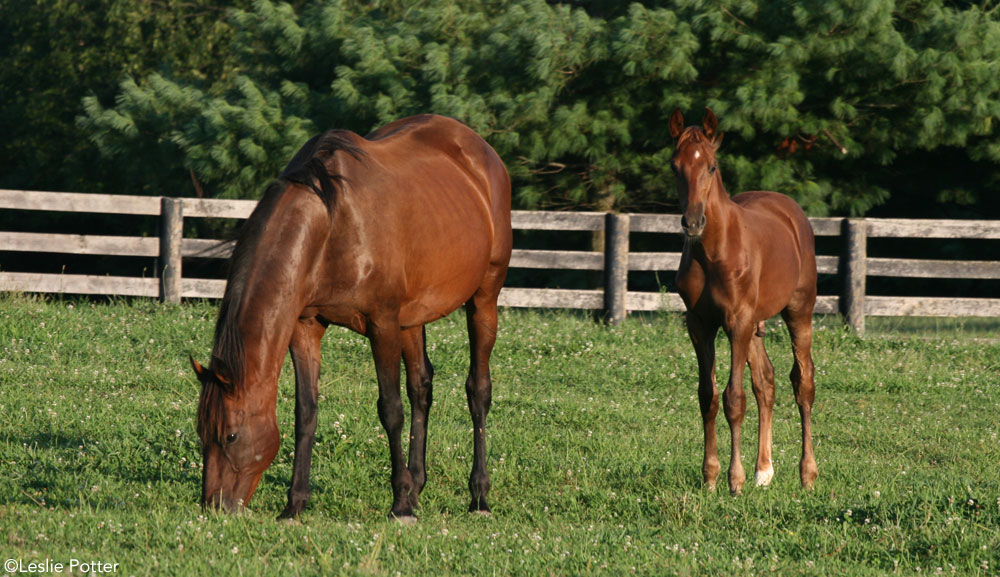
All horses need high-quality forage (in the form of hay or pasture) as the basis of their diet.
One of the most important things to learn when getting a new horse is how to feed him correctly. A big enough feeding mistake could cause colic (digestive upset) or laminitis (a painful inflammation of the feet), either of which can be a life-threatening veterinary emergency. Here are some feeding dos and don'ts that will help you determine the best diet for your horse.
DO: Feed lots of high-quality forage.
Since horses originated in the wild as grazing animals, they do best when eating a diet of mostly forage (hay and/or pasture). Grain is a modern invention—a form of concentrated calories fed to horses that do a lot of exercise, or hard keepers that need help putting weight on.
Horses need to eat a minimum of 1.5 percent of their body weight in forage (dry weight) per day, which equates to 15 pounds for the average 1,000-pound horse. A great investment is a scale to weigh your portions. Put the hay in a hay net and hang it from a fish or luggage scale. Horses that need more hay can be fed free-choice (unlimited), which equates to up to approximately 2.5 percent of their body weight per day.
Lush pasture grass is very high in calories and will often pack the pounds on faster than hay will. Limit grazing time if your horse becomes overweight, and opt to feed hay instead.
DON'T: Feed poor-quality hay.
Most horses eat more hay than pasture, so be vigilant about quality. Hay should be free of weeds, debris, mold or any musty smell. It doesn't necessarily have to be bright green in color, but hay should smell fresh and be more soft than stemmy.
Hay contaminated with dead mammals can cause botulism, which is more likely to happen when making round bales. Always vaccinate your horse for botulism if you feed round bales, and only buy those that were stored under cover. Round bales made for cattle are usually too poor quality for horses.
Be particularly picky about mold in your hay. Reject the entire load if you examine some bales and find obvious black or brown mold, or smell a musty scent. Mold particles will damage your horse's airway and cause respiratory disease that can permanently affect his breathing.
If you feed alfalfa hay, check for leaf shatter before buying. If the leaves shatter too easily, you'll be losing a great deal of the hay's nutrition before your horse is able to eat it. Also be on the lookout for blister beetles that feed on alfalfa. They release a toxin called cantharadin, and even small particles of these beetles contain enough toxin to make a horse quite sick.
DO: Be prepared for a hay shortage.
Many areas of the country are frequently, but not predictably, hit with drought years. This drives up the cost of hay when it has to be brought in from farther away, or makes it impossible to find altogether.
As long as it is baled and stored properly, hay that was harvested at a later maturity or has sat in storage for up to a year can still be fine to feed, particularly when options are limited. Some horses may find mature hay unpalatable, however, and refuse to eat it. Older bales that are free of excessive dust are usually fine once opened, even though the outside may be bleached in color, indicating vitamin loss.
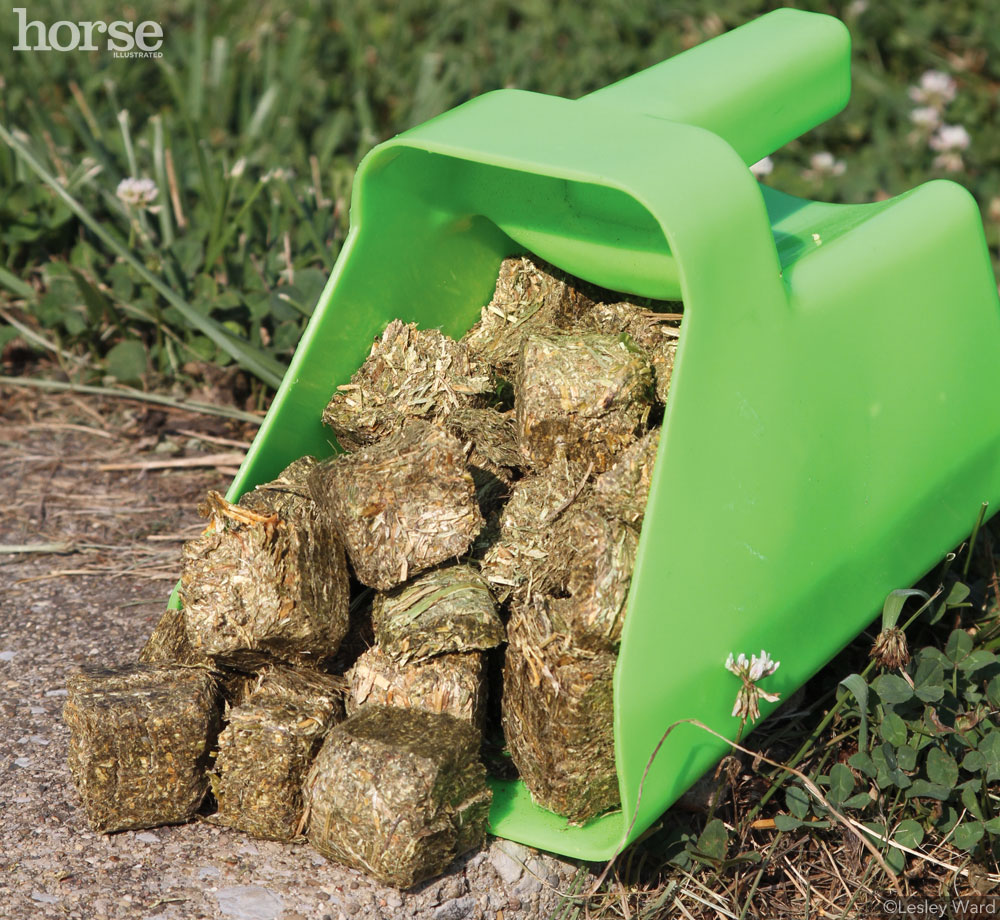
Hay cubes are an alternative if you find yourself in a hay shortage.
Be prepared ahead of time by buying as much hay as you can store at a time (up to a year's worth), and know your alternatives. Ask your feed store about bagged hay cubes or other "hay stretchers," such as complete feeds, to make your remaining hay go as far as possible. Use feeders or hay nets over rubber mats to prevent waste and trampling.
DON'T: Allow easy keepers too much pasture.
Although horses are naturally grazing animals, farm pasture grasses are usually improved nutritionally to provide extra calories. The starches, sugars and fructan in grass can lead to crippling laminitis, a painful inflammation in the hooves, if eaten in excess.
Horses that gain weight easily and have cresty necks are most at risk for pasture-related laminitis. Signs that the pasture may be storing extra starch, sugar and fructan (instead of putting them toward plant growth) include any time it is sunny but the temperatures go below 40 degrees Fahrenheit, and when the grass is stressed by drought or overgrazing.
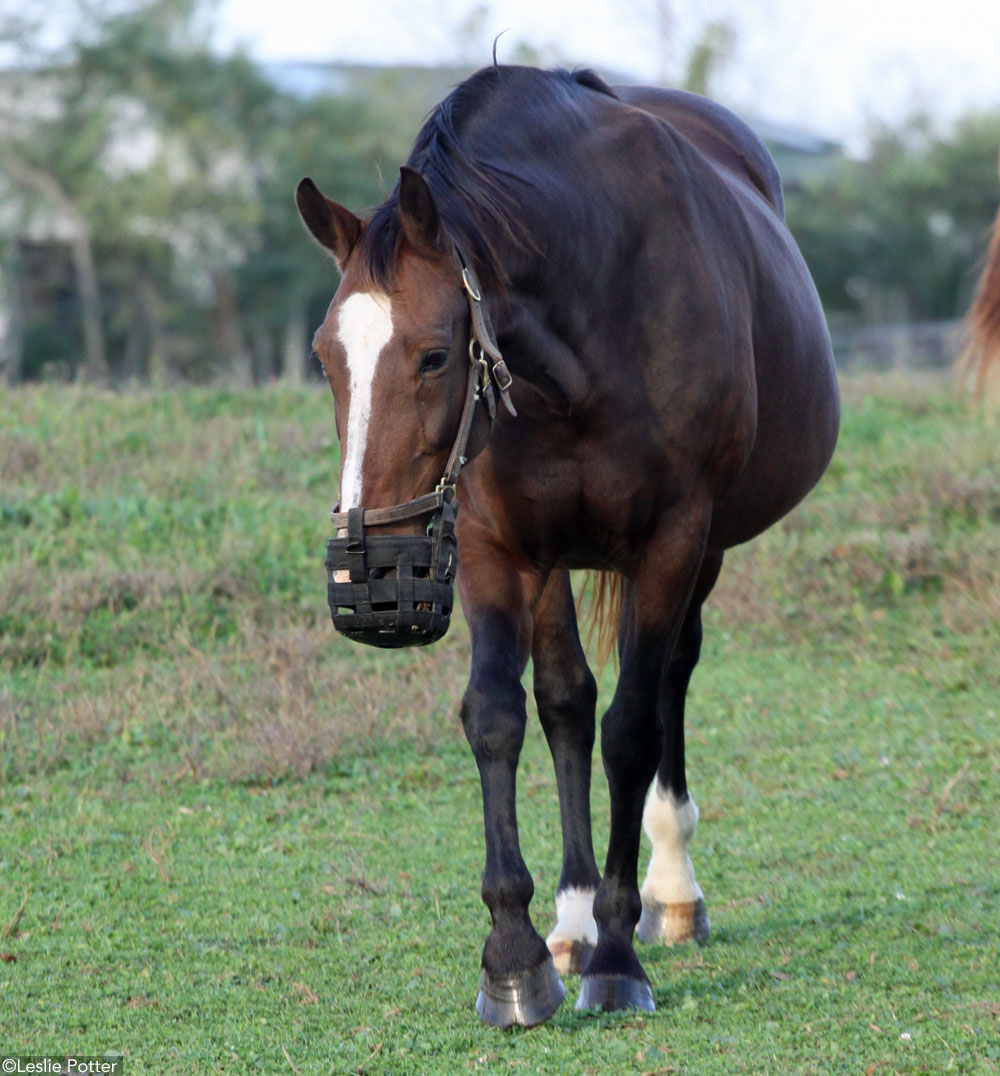
Use grazing muzzles on horses that tend to gain too much weight if they have access to pasture.
DO: Manage your pastures carefully.
It may be tempting to look at the abundance of spring grass and add more horses to your pasture, but that's usually not a good idea. Depending on how arid your region is, you may need 1 to 10 acres per horse for adequate full-time grazing.
To minimize bare spots that will get colonized by weeds, pastures need to be rested. Ideally, you should have two or more fields to rotate your horses between. It's not necessary to spend lots of money on fencing; for interior pasture separation, you can use step-in T-posts and electric tape with a solar charger. Always use a solid perimeter fence for safety.
If your pasture has been overcrowded and grazed down or has suffered from a drought, it's best to re-seed and wait six to 12 months before returning horses to the field. Weeds should be managed with mowing or an herbicide; follow directions for keeping livestock off the pasture until it's safe for grazing.
DON'T: Forget the exercise.
A fit horse, like a fit human, will have greater muscle mass and bone density. For a horse with minor arthritis, low-intensity movement can help alleviate aches and pains and keep him feeling better. For overweight horses, an exercise program is absolutely essential for health and shedding pounds.
DO: Feed a balanced diet.
Since hay alone may not provide your horse with enough calories, many horse owners supplement the diet with grain. If your horse needs grain for extra calories, you should use a commercially formulated horse feed. These will be nutritionally balanced to meet the vitamin and mineral requirements of horses, unlike a straight grain (corn, oats, barley, et cetera).
DON'T: Overfeed your horse.
It is helpful to learn about body condition scoring so you can keep your horse from becoming obese and suffering from related health problems. Some ponies and certain horse breeds are very easy keepers and do not need to eat grain. Fortunately, ration balancers are made by most commercial feed companies that contain all the vitamins and minerals a horse needs without all the calories found in grain. Talk to someone knowledgeable at your feed store to help you select a ration balancer.
Additionally, always keep your feed room/grain bin locked up so that your horse can't break in and gorge on feed. This happens more than you might think, and can lead to a life-threatening bout of laminitis.
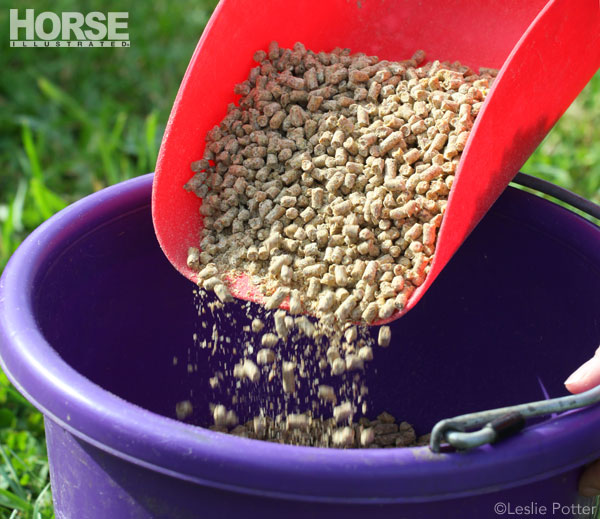
DO: Feed concentrated calories if your horse needs them.
On the other end of the scale are hard keepers, often Thoroughbreds or Thoroughbred crosses. This type of horse requires a higher calorie intake to stay at a healthy weight. If your horse is already eating unlimited high-quality hay and a maximum amount of grain (no more than 5 pounds per meal in order to prevent digestive upset), you can add fat to his feed to supplement calories.
Vegetable oil is the most inexpensive form of supplementary fat, and most horses prefer the taste of corn oil above all others. Start off by adding just a couple of tablespoons to each grain meal, working upward over a span of two weeks to a maximum of 1 cup of oil twice a day. It takes time for a horse's body to learn to metabolize fat and get used to the taste, since it's not naturally found in large quantities in the equine diet. After acclimating, he may be fine with eating these quantities.
For picky eaters, or if you want to incorporate a fat source with more omega-3 fatty acids (corn oil is mainly omega-6 fatty acids), you can purchase a powdered equine fat supplement at the feed store that may be more palatable. These are formulated to help put weight on and be tasty, and often contain rice bran.
DON'T: Ignore your horse'sspecific needs.
If your horse is a senior citizen or has a health condition such as insulin resistance, he will probably need a more specialized diet. Talk to your vet about his individual needs.
If a senior is missing teeth, he may need to eat soaked hay cubes or senior feed in order to ingest enough forage and/or calories in his diet. Beet pulp is another highly digestible source of calories from fiber, although plain beet pulp is not a balanced feed and should not make up more than 25 percent of the diet. Always soak it in plenty of water for at least one hour before feeding to prevent choke. If you have any left over, it should be fed within the day so that it doesn't begin to ferment.
DO: Be aware of special concernsfor youngsters.
If you have a young horse that's still growing, he will have slightly higher protein and calcium needs than an adult horse. The calcium/phosphorus and other mineral ratios in the diet are particularly important at this time, so you should talk to your equine veterinarian, a nutritionist at a feed company, or an equine extension agent to see if the diet you're feeding is appropriate. Feeding concentrates (grain) made specifically for young, growing horses will take into account these particular needs.
You should also avoid raising an overweight/obese youngster, as joint strain at this age can cause permanent damage. Use your body condition scoring chart often to make sure he stays in the middle of the BCS range.
DON'T: Oversupplement.
If you've spent any amount of time in a feed store, you've probably noticed the numerous equine oral supplements on the market. The variety can be dizzying.
Supplements exist to address specific health issues from digestion to respiratory health. If your vet recommends trying a joint supplement for an arthritic horse, for example, try it out and see if you notice a difference after six weeks. If there are additional issues you want to address with supplements, check with your vet or an equine nutritionist to make sure your horse's diet stays balanced when you add your supplements.
DO: Provide free-choice salt.
A hay and grain diet usually doesn't provide sufficient salt, particularly during hotter weather. Always keep a salt source in your horse's field or stall; several kinds are available. If your horse will lick a regular salt block, you can choose either a white or trace-mineral (brown) type. Newer to the market are Himalayan salt licks, which can be more palatable for horses that don't like the other solid types. A free-choice feeder for loose salt is also an option if your horse doesn't like a block.
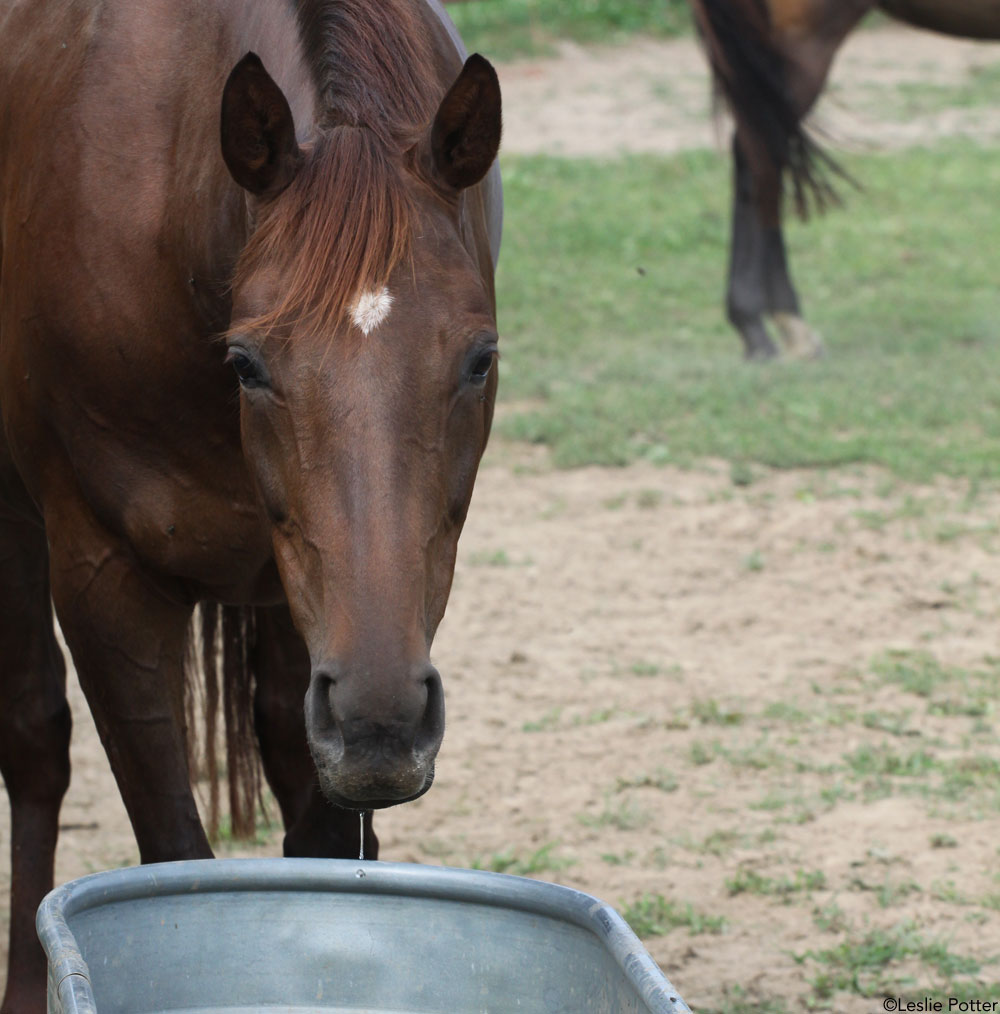
DON'T: Forget the water.
Many people forget that water is the No. 1 nutrient your horse needs. Horses are often sensitive to dirty water or water that's too hot. Make sure your horse always has plenty of clean water at a good drinking temperature. When troughs freeze or buckets sit empty, there is the potential for digestive contents to dry out in his gastrointestinal tract and cause impaction colic, a very serious veterinary emergency that is easily avoided with a bit of diligence in this area.
Managing Editor Holly Caccamise has an M.S. in Animal Science with a specialization in equine nutrition and exercise physiology.
This article originally appeared in the 2014 edition of Your New Horse.
Source: https://www.horseillustrated.com/horse-health-horse-feeding-dos-and-donts
0 Response to "Does Feeding Horses Do Anythng Portia"
Post a Comment